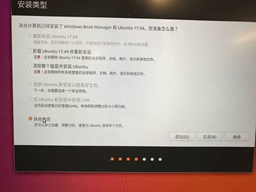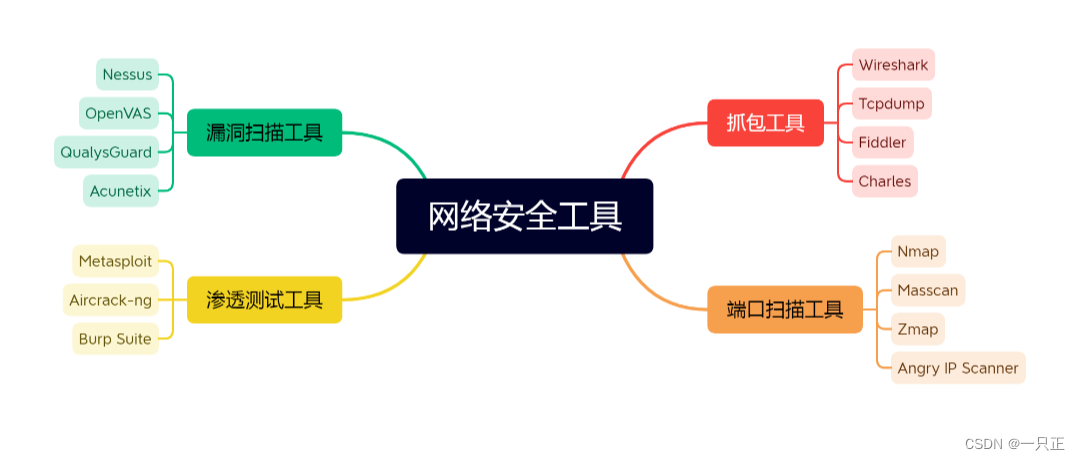ssd nvme sata
介绍 (Introduction)
This article assumes that you are competent in installing new drives in your computer, as well as the installation of the Windows operating system on new drives.
本文假定您有能力在计算机中安装新驱动器,以及在新驱动器上安装Windows操作系统。
The purpose of this article is to compare data storage technologies, specifically traditional SATA SSDs versus the new NVMe M.2 SSDs. It is not intended to compare specific makes and models of hardware. My resources are somewhat limited, so I only studied the speeds of one type of SATA SSD and two types of NVMe SSDs, as well as the effect of one type of adapter that will be necessary to connect an NVMe SSD to the PCIe bus, if the machine's main board does not have an NVMe M.2 connector. The truth is that there is such a huge difference between the speeds of the two types of SSDs that useful conclusions can be drawn, even though the tests were conducted on a limited variety of hardware components.
本文的目的是比较数据存储技术,特别是传统的SATA SSD与新的NVMe M.2 SSD。 它无意比较硬件的特定品牌和型号。 我的资源有限,因此,我仅研究了一种SATA SSD和两种NVMe SSD的速度,以及将NVMe SSD连接到PCIe总线所必需的一种适配器的影响(如果有)。机器的主板没有NVMe M.2连接器。 事实是,即使在有限种类的硬件组件上进行测试,两种类型的SSD的速度之间也存在巨大差异,因此可以得出有用的结论。
背景 (Background)
About a year ago, my old desktop became long in the tooth and I saved up to replace it. The new machine came with an Intel SSDPEKKF010T8 1TB NVMe SSD as the system's drive. The machine's main board had an NVMe M.2 connector. The drive seemed incredibly fast, but only later did I realize the full potential of the new SSD technology.
大约一年前,我的旧台式机已经用不完了,我积蓄起来更换了它。 新机器配备了Intel SSDPEKKF010T8 1TB NVMe SSD作为系统驱动器。 机器的主板上有一个NVMe M.2连接器。 该驱动器看起来非常快,但是直到后来我才意识到新SSD技术的全部潜力。
This is the tiny NVMe M.2 connector on the main board:
这是主板上的微型NVMe M.2连接器:
那么,什么是NVMe SSD? (So What IS an NVMe SSD?)
NVMe M.2 is the latest technology of SSD. It is much too fast to be connected to the SATA bus, so it plugs directly into the machines PCI Express bus. It is tiny, the version intended for desktops measures 80mm X 22mm. It is barely 3mm thick. It is about the size of a stick of gum. This is an example, the Samsung 970 PRO:
NVMe M.2是SSD的最新技术。 它太快了,无法连接到SATA总线,因此直接插入计算机的PCI Express总线。 它很小,适用于台式机的尺寸为80mm X 22mm。 它只有3毫米厚。 它大约是口香糖的大小。 这是一个三星970 PRO的示例:

Can your machine be outfitted with this latest version of SSD? Well, it depends. To be able to boot from the NVMe SSD, your BIOS MUST offer the option to enable booting from NVMe M.2 drives. If it does not, your BIOS may not "see" the drive.
您的机器可以配备此最新版本的SSD吗? 这要看情况。 为了能够从NVMe SSD引导, 您的BIOS必须提供启用从NVMe M.2驱动器引导的选项。 如果不是,则您的BIOS可能不会“看到”驱动器。
[Edit: Apparently this is not true for all machines. What is probably essential, is that your Storage Controllers list must show an NVMe Controller as shown below. /Edit]
[编辑:显然,并非所有机器都这样。 可能至关重要的是,“存储控制器”列表必须显示如下所示的NVMe控制器。 /编辑]
Another way to check: If you open Device Manager and open Storage Controllers and you see an entry for an NVMe, you should also be in luck:
另一种检查方法:如果打开设备管理器并打开存储控制器,并且看到NVMe的条目,那么您也应该很幸运:

费用呢? (What About the Cost?)
Well, this may surprise you. The cost has come down considerably. Premium NVMe SSDs now cost just about the same as SATA SSDs of the same capacity. I expect that the cost may come down even further as sales volumes grow. Check out the prices on sites like Amazon, if you wish to confirm.
好吧,这可能会让您感到惊讶。 成本大大降低了。 现在,高级NVMe SSD的成本与相同容量的SATA SSD几乎相同。 我预计随着销量的增加,成本可能会进一步下降。 如果您想确认,请在亚马逊等网站上查看价格。
我的主板没有NVMe连接器? (My Main Board Does Not Have a NVMe Connector?)
Check that your BIOS can boot from NVMe and if so: Do you have am open X4 connector on your PCIe 3.0 bus? (pictured below):
检查您的BIOS是否可以从NVMe引导,如果可以,请执行以下操作:PCIe 3.0总线上的X4连接器是否打开? (如下图所示):

If so, you are in luck: You can get an adapter that plugs into the PCIe 3.0 X4 connector. After I had my machine for a year, faster NVMe devices became available and I decided to upgrade. I replaced the Intel NVMe device (that served me very well for a year) with a Samsung unit, pictured previously. This left me with a spare Intel unit that was still working perfectly. I had an open X4 connector on my PCIe 3.0 bus, so I bought a PCIe 3.0 to NVMe adapter. The unit I bought was made by QNINE called: M.2 NVME SSD to PCI Express 3.0 Host Controller Expansion Card. It is pictured below:
如果是这样,那么您很幸运:您可以获得一个插入PCIe 3.0 X4连接器的适配器。 拥有一年的机器后,可以使用更快的NVMe设备,因此我决定升级。 如上图所示,我用三星单元更换了英特尔NVMe设备(该设备在一年内表现非常出色)。 这给了我一个备用的仍能正常工作的Intel单元。 我在PCIe 3.0总线上有一个开放的X4连接器,因此我购买了PCIe 3.0到NVMe适配器。 我购买的设备由QNINE制造,名为:M.2 NVME SSD到PCI Express 3.0主机控制器扩展卡。 如下图所示:

As you can see, this adapter can accommodate SSDs 30mm, or 42mm, or 60mm or 80mm long. Note that this adapter is just a "dumb" pass through adapter. It has no electronics, apart from a lone capacitor. It does no processing of any kind, so don't go looking for a driver for it, like some reviewers on Amazon apparently did :-)
如您所见,此适配器可容纳30mm或42mm或60mm或80mm长的SSD。 请注意,此适配器只是一个“哑”传递适配器。 除了单个电容器外,它没有电子设备。 它不进行任何形式的处理,因此不要去寻找驱动程序,就像亚马逊上的某些评论者显然做了:-)
Note: When I replaced the Intel SSD, I did a fresh clean install of Windows 10 - 1909 on the new Samsung drive, so the driver for the original Intel SSD was gone.
注意 :更换Intel SSD时,我在新的Samsung驱动器上全新安装了Windows 10-1909,因此原来的Intel SSD的驱动程序不见了。
By the way: After the new drive was appropriately partitioned for UEFI safe boot, the actual installation of the full bare bones Windows operating system (before updates) took about 8 minutes. I kid you not!
顺便说一句:在对新驱动器进行了适当的分区以进行UEFI安全启动之后,完整裸机Windows操作系统的实际安装(更新之前)花费了大约8分钟。 我不骗你!
So I installed my spare Intel NVMe M.2 on the adapter and plugged the adapter into the 4X PCIe 3 slot. When I first turned the machine on, Windows took a minute or two before it recognized the Intel SSD in the adapter. I suspect that Windows went surfing the Internet for a driver for the Intel device, because I was told the driver was up to date when I tried to manually install it.
因此,我在适配器上安装了备用英特尔NVMe M.2,并将适配器插入4X PCIe 3插槽。 当我第一次打开计算机时,Windows需要一两分钟才能识别适配器中的Intel SSD。 我怀疑Windows正在Internet上寻找Intel设备的驱动程序,因为当我尝试手动安装该驱动程序时,有人告诉我该驱动程序是最新的。
Now I had a nice setup: a fast NVMe for the systems drive and another for my data drive. I also have a traditional Samsung SATA SSD in the machine that I only use to keep Macrium images. This also gave me a platform to test the relative speeds of the different drives.
现在,我有了一个不错的设置:快速的NVMe用于系统驱动器,另一个用于我的数据驱动器。 我的机器中还有一个传统的Samsung SATA SSD,仅用于保存Macrium图像。 这也给了我一个测试不同驱动器相对速度的平台。
最后:测试结果 (At Last: The Test Results)
Please note that these results apply to my particular setup, with the drives installed in a year old, but fast, Dell XPS8930 desktop. Your test results may differ, depending on your hardware configuration.
请注意,这些结果适用于我的特定设置,这些驱动器安装在使用了一年但速度很快的Dell XPS8930台式机上。 测试结果可能会有所不同,具体取决于您的硬件配置。
All tests were done using the 'winsat' utility of Windows. If you are unfamiliar with winsat: Open an elevated command prompt and enter the command:
所有测试均使用Windows的“ winsat ”实用程序进行。 如果您不熟悉winsat :打开提升的命令提示符并输入命令:
winsat disk -drive cWhere 'c' is the drive letter of the drive you want to check. Winsat is a very useful tool to have in your toolbox.
其中“ c ”是您要检查的驱动器的驱动器号。 Winsat是在工具箱中提供的非常有用的工具。
第一项 (The First Item)
A traditional spinning disk hard drive (A Western Digital Black 1 TB HDD):
传统的旋转磁盘硬盘驱动器(Western Digital Black 1 TB HDD):
(I did this test some time ago, before changing the NVMe drive.)
(我在更换NVMe驱动器之前做过此测试。)
- Sequential Read: 150.7 MB/s 顺序读取:150.7 MB / s
- Sequential Write: 266.3 MB/s 顺序写入:266.3 MB / s
第二项 (The Second Item)
A Samsung Pro 850 traditional SATA SSD:
三星Pro 850传统SATA SSD:
- Sequential Read: 531.5 MB/s 顺序读取:531.5 MB / s
- Sequential Write: 500.6 MB/s 顺序写入:500.6 MB / s
第三项 (The Third Item)
An Intel SSDPEKKF010T8 1TB NVMe SSD in main board connector:
主板连接器中的Intel SSDPEKKF010T8 1TB NVMe SSD:
- Sequential Read: 2782 MB/s 顺序读取:2782 MB / s
- Sequential Write: 1474 MB/s 顺序写入:1474 MB / s
第四项 (The Fourth Item)
An Intel SSDPEKKF010T8 1TB NVMe SSD in QNINE Adapter:
QNINE适配器中的Intel SSDPEKKF010T8 1TB NVMe SSD:
- Sequential Read: 2765 MB/s 顺序读取:2765 MB / s
- Sequential Write: 1425 MB/s 顺序写入:1425 MB / s
第五项 (The Fifth Item)
Samsung 970 Pro 500GB NVMe SSD in main board connector:
主板连接器中的Samsung 970 Pro 500GB NVMe SSD:
- Sequential Read: 3434 MB/s 顺序读取:3434 MB / s
- Sequential Write: 2741 MB/s 顺序写入:2741 MB / s
结论 (Conclusions)
Modern NVMe M.2 SSDs seem about 5 to 6 times faster that older SATA SSDs that were considered super fast a few years ago. Moreover: they are much smaller, seem to draw less power and their price is currently about the same.
现代NVMe M.2 SSD似乎比几年前被认为超快的旧SATA SSD快约5至6倍。 而且:它们体积更小,耗电量似乎较小,目前的价格大致相同。
However, you need a reasonably new PC that can handle NVMe M.2 SSDs.. Maybe Santa can help in this regard? :-)
但是,您需要一台可以处理NVMe M.2 SSD的合理的新PC。也许圣诞老人可以在这方面提供帮助? :-)
Installing the NVMe device in a good PCIe 3.0 adapter seems to have no significant impact on performance, provided you have a spare X4 PCIe 3.0 slot on the main board.
如果主板上有备用X4 PCIe 3.0插槽,则在良好的PCIe 3.0适配器中安装NVMe设备似乎对性能没有明显影响。
Please keep in mind these tests were done on my particular setup with limited hardware choices. More comprehensive tests may yield different results, but I doubt the conclusions will be fundamentally different.
请记住,这些测试是在有限的硬件选择下对我的特定设置进行的。 更全面的测试可能会得出不同的结果,但我怀疑结论会根本不同。
Futher reading:
进一步阅读:
https://appuals.com/how-to-check-pcie-m-2-nvme-ssds-compatibility-with-your-pc/
https://appuals.com/how-to-check-pcie-m-2-nvme-ssds-compatibility-with-your-pc/
History
历史
30th November, 2019: First version
2019年11月30 日 :第一版
- 4th December, 2019: Second Version 2019年12月4日:第二版
- 5th December, 2019: Added a link for further reading. 2019年12月5日:添加了进一步阅读的链接。
翻译自: https://www.codeproject.com/Articles/5252448/NVMe-SSDs-versus-Traditional-SATA-SSDs
ssd nvme sata







